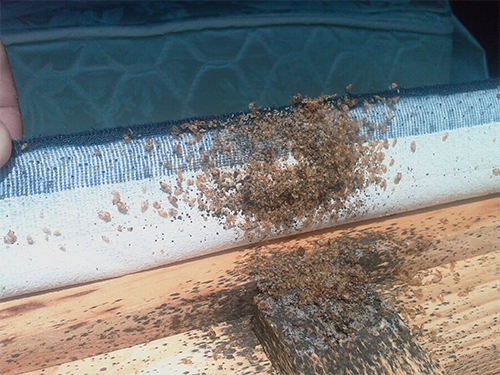A1 Bed Bug Removal Houston: Trusted Extermination Services
Wiki Article
Recognizing the Lifecycle of Bugs for Targeted Control Methods
Understanding the lifecycle of parasites is a fundamental aspect of reliable bug administration approaches. By understanding the different stages of growth that bugs undertake, a more accurate and targeted method can be adopted to manage their populations. This knowledge not only clarifies the susceptabilities within the parasite lifecycle but also leads the way for carrying out calculated actions that can disrupt their growth and recreation cycles. Via a much deeper understanding of exactly how pests thrive and develop, tailored control methods can be designed to deal with specific factors in their lifecycle, inevitably resulting in even more successful bug management end results.Significance of Recognizing Pest Lifecycle
Recognizing the lifecycle of pests is crucial for developing efficient and targeted control methods in parasite monitoring. By understanding the different stages a parasite goes through from egg to adult, bug control professionals can identify at risk factors in the lifecycle where treatment can be most successful.Additionally, recognizing the specific ecological problems needed for each and every phase of the bug's lifecycle can assist decisions on habitat modification or exclusion approaches to disrupt the lifecycle and reduce pest populations. This knowledge allows pest administration specialists to apply aggressive measures rather than depending only on reactive therapies, resulting in even more long-term and sustainable pest control solutions. Eventually, a detailed understanding of parasite lifecycles encourages bug control experts to customize their approaches efficiently, making best use of and lessening environmental influences control results.
Key Phases in Insect Growth
To properly implement targeted control methods in insect administration, a crucial element exists in thoroughly identifying and understanding the key stages in insect advancement. Pest development generally consists of numerous vital phases that are important for their lifecycle and administration.

Vulnerabilities in Parasite Lifecycle
Throughout the various phases of a bug's lifecycle, unique vulnerabilities arise that can be purposefully targeted for efficient control measures (A1 Bed Bug treatment houston). One critical vulnerability lies in the egg stage, where pests are commonly much more vulnerable to specific insecticides or organic control agents due to their soft outer shell, making them less complicated targets for treatment. Understanding these vulnerabilities in the parasite lifecycle is necessary for establishing accurate and effective control methods that effectively handle pest populaces while minimizing ecological influence.Executing Targeted Control Actions

Implementing targeted control measures usually entails a multi-faceted method. This may include habitat alteration to make the setting much less hospitable to insects, such as getting rid of standing water for mosquito control or sealing access factors for rodents. Furthermore, organic control approaches can be utilized, where natural predators or virus are presented to maintain pest populations in check.
Integrated Insect Administration (IPM) techniques that incorporate different control steps in a coordinated and lasting manner are often the most reliable in attaining long-term parasite administration goals. By carrying out targeted control steps based on a thorough understanding of parasite lifecycles, bug populations can be like this effectively regulated while decreasing risks to human wellness and the environment.
Boosted Insect Administration Practices

Additionally, the unification of biological control agents, such as natural predators or virus of pests, can help decrease dependence on chemical pesticides and advertise an extra well balanced ecosystem. Executing physical barriers and catches can additionally become part of boosted insect management practices, offering safe and targeted remedies for bug control. Furthermore, making use of pheromones and various other semiochemicals can interfere with pest breeding patterns and communication, resulting in reduced parasite populaces gradually.
Final Thought
By identifying key stages wikipedia reference in parasite development and susceptabilities in their lifecycle, targeted control measures can be carried out to minimize bug populaces. Enhanced bug management company website methods can aid reduce the reliance on broad-spectrum chemicals and advertise more environmentally pleasant and lasting pest control techniques.Recognizing the lifecycle of insects is essential for establishing efficient and targeted control strategies in insect administration. By understanding the numerous stages an insect goes with from egg to grownup, pest control experts can determine prone points in the lifecycle where intervention can be most successful. Eventually, a comprehensive understanding of pest lifecycles encourages insect control professionals to tailor their strategies properly, making the most of and lessening ecological impacts control results.
By executing targeted control procedures based on an extensive understanding of pest lifecycles, bug populaces can be successfully regulated while decreasing threats to human health and the setting.
By recognizing crucial stages in insect growth and susceptabilities in their lifecycle, targeted control procedures can be carried out to reduce pest populaces.
Report this wiki page